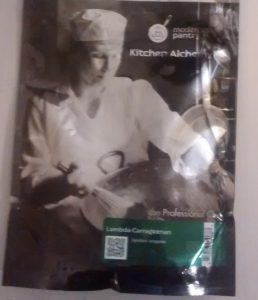To be very frank – I am growing increasingly more worried about the state of the craft distilling movement all the time. The urgency to get a product to market is doing the craft movement no favors at all. The vendors that play into this urgency need to dial it back. Case in point – craft distillers have discovered that they can buy staves and cubes and chips of toasted oak from a number of N. American sellers and toss this crap into a tote of distillate. After 3-4 weeks….et voila….Whisky !! But, it is not Whisky. It is brown colored piss in a bottle. Craft distillers then run around blathering about small batch, handcrafted and somewhere in there is usually a colorful marketing tale about someone’s grandfather being a gun-totin’, cattle-rustlin’ Moonshiner. To the consumer – all of this is very new and very attractive. But, if the whisky is piss in a bottle, how does that benefit the consumer? How does that benefit anyone? Sadly, there is a reluctance on the part of craft distillers to embrace science. Maybe it is more of a fear? Who knows. My message in all of this is – you do not have to be enrolled in a M.Sc. program at Heriot Watt to understand the science. You do not even need to be enrolled in the IBD exam offerings. All you need do is read a basic book on Microbiology and then apply some of what you learned to reading scientific papers. And these papers are readily available to you. Case in point – last evening I went to Google Scholar and typed in something about Oak Aging and Whisky. Next thing you know I was pulling out my credit card and spending $10 to buy a 1981 research paper written by a gentleman at the Seagram’s Research Center in Kentucky (back when Seagram’s actually still owned production facilities). A read of the paper reveals some key mechanisms. In an oak barrel, ethanol oxidizes to acetaldehyde and thence to acetic acid. It is the combination of the acid and ethanol that generate esters (flavor and aroma). The wood lignins break down under the influence of ethanol into aromatic aldehydes. The hemicelluloses break down into various polysaccharides that impart sweetness to a Whisky. Adding distillate to the barrel at between 55% and 65% is shown to be the optimal strength. Add the distillate at higher proof and you accomplish nothing. Charring of the oak alters the celluloses and hemicelluloses and makes them more reactive with the ethanol. Hence, charred barrels will deliver a better flavor profile. Time in the oak is also key. A good amount of the color and flavor is developed in year 1 of aging, but the extraction of color and flavor continues for years on end. The temperature of the aging room affects the extraction of color and flavor too. Age at a warmer temperature and the relative proportions of esters and aldehydes will shift. Hence temperature can be used to help a distiller arrive at a desired flavor profile. Re-using a barrel again also is a risk. I see a lot of craft people running around wild-eyed and crazed in search of used barrels from Jack Daniels. Hello? Jack Daniels has already used that barrel for maybe 6 years. Adding your distillate and leaving it sit will earn you nothing. The barrel needs to be re-furbished. I saw this recently in Scotland where it was made very clear to me that the incoming used Bourbon barrels from the USA are sent to a cooperage in Inverness for refurbishing.
So this whole reading process of this one 1981 paper took me all of an hour and the information gleaned is amazing. With such data and information so readily available to us in this information age, why take shortcuts by adding sticks and cubes and staves to distillate? Embrace the science and make a truly fantastic product. Take that truly fantastic product and wrap it in the story about your gun-totin’, Moonshinin’ ancestor and believe me you will have people breaking your door down to buy your Whisky. Then, the big commercial distillers will really have something to fear….




